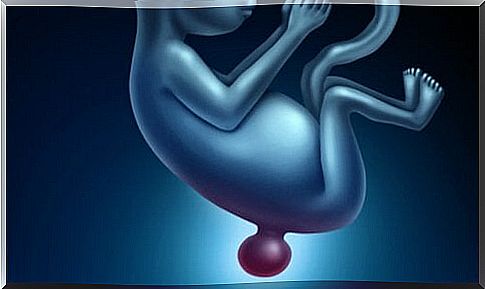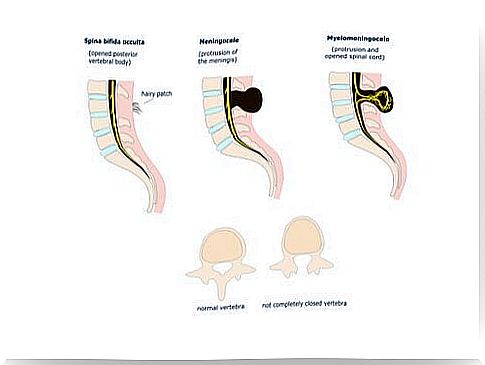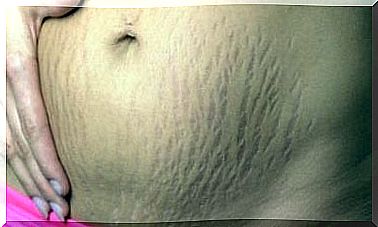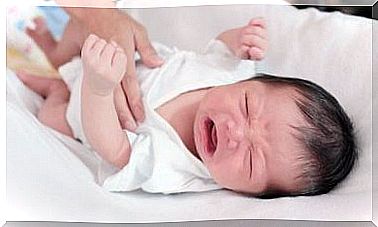Spina Bifida

Spina bifida is the most common neural tube closure disorder. The fissure affects the spine and, in some cases, the spinal cord to varying degrees. Because the severity of the split can vary, the resulting symptoms can also be of very different degrees. It is a congenital malformation for which there is no direct cure but whose symptoms can be relieved.
Spina bifida
A spinal fissure forms in the fetus at an early stage of individual development and is one of the most common congenital malformations. In this type of neural tube closure disorder, the neural tube does not close properly from the lower part of the spine during neurulation. Spina bifida includes spina bifida occulta, meningose, and meningomyelose, which we will discuss in more detail below.
Occult spina bifida
This is the mildest form of spina bifida and may also go unnoticed. As its name suggests, this form of deformity is hidden under the skin.
Admittedly, even if it is hidden, there may be birthmarks or a dent in the skin surrounding the opening. As for the latent deformity itself, the nuclear cavity may be attached to the tissue, so that the deformity does not affect the nerves.
Most babies born with occulta spina bifida do not suffer from long-term problems. This form is otherwise found more often in later childhood or even adulthood.

Meningoseele
Meningocele targets the meninges, the membranes that cover and protect the brain and spinal cord. When these membranes bulge as a result of an opening formed in the spine, a bag filled with liquid is created at the site of bursting.
Babies born with this defect can suffer from a variety of health problems that depend on the damage to the nerves surrounding the spine. For example, they may have varying degrees of muscle paralysis or learning disabilities, such as attention deficit hyperactivity disorder.
Myelomeningoseele
When we talk about spina bifida, we usually mean myelomeningo gel, which is the most serious form of this malformation. This form causes moderate to severe injuries, such as possible immobility of the legs or unresponsiveness to stimuli.
Myelomeningo gel is formed when the meninges and the lower part of the spinal cord bulge out of an opening in the spine, thus forming a sac filled with fluid. This outer pouch of the body can erupt during birth and expose the spinal cord and nerves.
In addition to bone or muscle problems, babies born with this deformity may have a hydrocephalus, that is, fluid that has accumulated inside or outside the brain.
What causes spina bifida?
The cause of Spina bifida is unknown. It is important to study the factors that are associated with the development of this deformity, such as genes or the environment. However, there is definite information that it is associated with low folic acid levels.
Spina bifida occurs during the first weeks of pregnancy. It usually forms before the expectant mother even knows she is pregnant. Eating folic acid during pregnancy (400 micrograms per day) helps reduce its risk. But this, of course, does not guarantee a trouble-free pregnancy.
Other tips to prevent this deformity include:
- Talk to your doctor about which approach is best for you. Just as no two people are exactly alike, no two pregnancies are alike. It is better to follow a personalized plan that meets the needs of both mother and child.
- Study the ingredients of the medications, vitamins, and supplements you eat. During pregnancy, the body reacts differently to some medicines than at other times.
- Regulate your body temperature. High fever may increase the risk of spina bifida formation in the baby.
Spina bifida treatment
Treatments for spina bifida vary according to its severity. Depending a little on which systems are affected by the deformity, children may need the support of several different experts in the long run. These include not only doctors, but also therapists, social workers and associations that provide support and understanding.
Babies with spina bifida occult may not need treatment. However, in the case of an anchored spinal cord, surgery is required to separate it from the tissue. Babies usually do not experience problems after such an operation, although it is possible that the spinal cord will re-anchor.
Children with meningeal need surgery within their first months of life. In this surgery, the meninges are moved back inside the body and the opening is closed. The method is similar in the case of myelomeningose: the baby has to be operated on, but the operation is done a day or two after birth. If this malformation is detected in the early stages of pregnancy, then at week 25 of pregnancy it is possible to perform an operation to correct the defect. The hydrocephalus also has to be operated on if the baby is found to have one.









